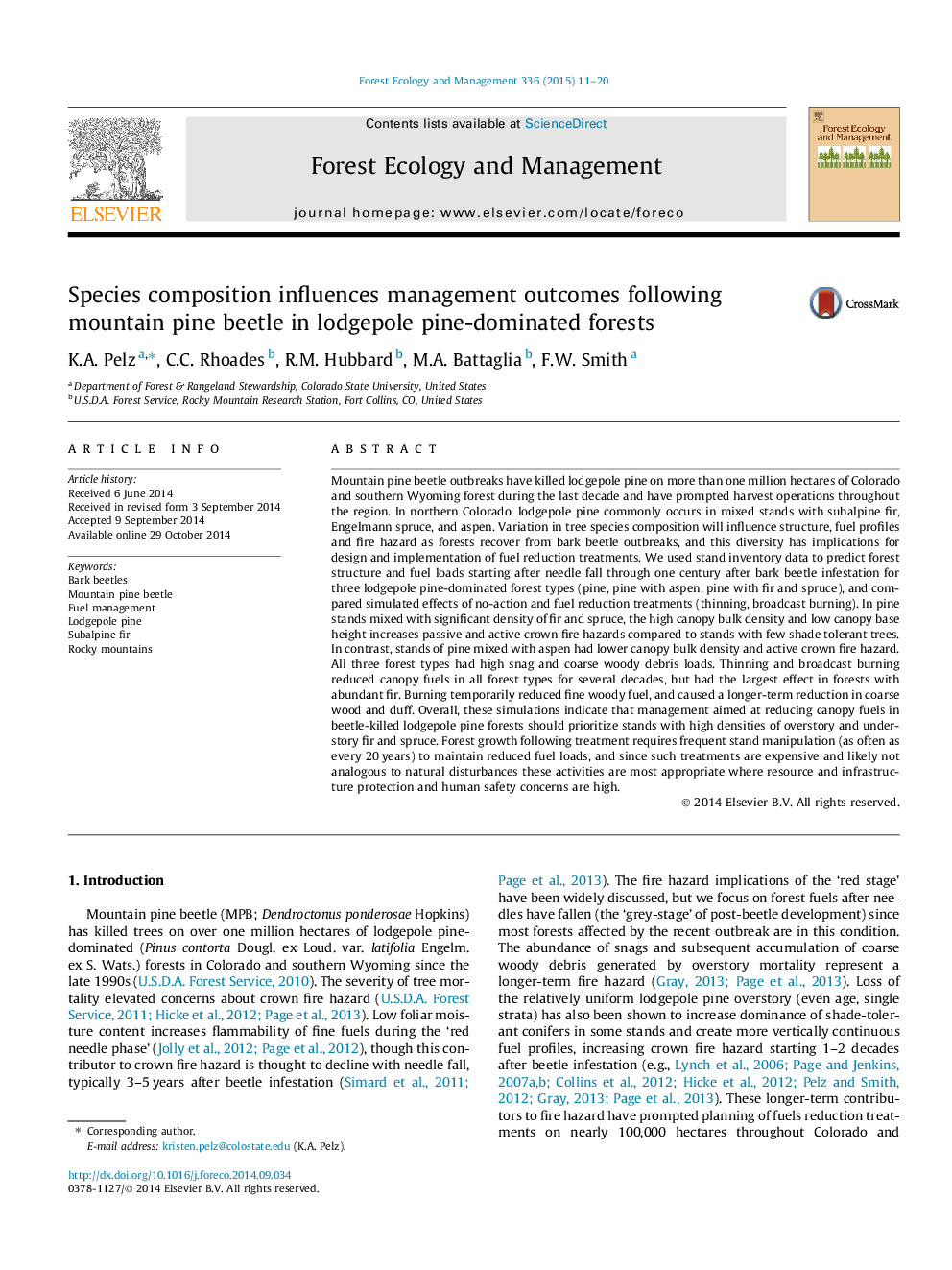| کد مقاله | کد نشریه | سال انتشار | مقاله انگلیسی | نسخه تمام متن |
|---|---|---|---|---|
| 86412 | 159187 | 2015 | 10 صفحه PDF | دانلود رایگان |
• We model stand development following bark beetles in three forest composition types.
• We simulate burning and thinning treatment effects on each forest type.
• Canopy fuels are most hazardous in forests mixed with subalpine fir and spruce.
• Canopy fuels are least hazardous in mixed lodgepole pine and aspen forest.
• Fuels reduction effects are greatest where shade-tolerant species are abundant.
Mountain pine beetle outbreaks have killed lodgepole pine on more than one million hectares of Colorado and southern Wyoming forest during the last decade and have prompted harvest operations throughout the region. In northern Colorado, lodgepole pine commonly occurs in mixed stands with subalpine fir, Engelmann spruce, and aspen. Variation in tree species composition will influence structure, fuel profiles and fire hazard as forests recover from bark beetle outbreaks, and this diversity has implications for design and implementation of fuel reduction treatments. We used stand inventory data to predict forest structure and fuel loads starting after needle fall through one century after bark beetle infestation for three lodgepole pine-dominated forest types (pine, pine with aspen, pine with fir and spruce), and compared simulated effects of no-action and fuel reduction treatments (thinning, broadcast burning). In pine stands mixed with significant density of fir and spruce, the high canopy bulk density and low canopy base height increases passive and active crown fire hazards compared to stands with few shade tolerant trees. In contrast, stands of pine mixed with aspen had lower canopy bulk density and active crown fire hazard. All three forest types had high snag and coarse woody debris loads. Thinning and broadcast burning reduced canopy fuels in all forest types for several decades, but had the largest effect in forests with abundant fir. Burning temporarily reduced fine woody fuel, and caused a longer-term reduction in coarse wood and duff. Overall, these simulations indicate that management aimed at reducing canopy fuels in beetle-killed lodgepole pine forests should prioritize stands with high densities of overstory and understory fir and spruce. Forest growth following treatment requires frequent stand manipulation (as often as every 20 years) to maintain reduced fuel loads, and since such treatments are expensive and likely not analogous to natural disturbances these activities are most appropriate where resource and infrastructure protection and human safety concerns are high.
Journal: Forest Ecology and Management - Volume 336, 15 January 2015, Pages 11–20
